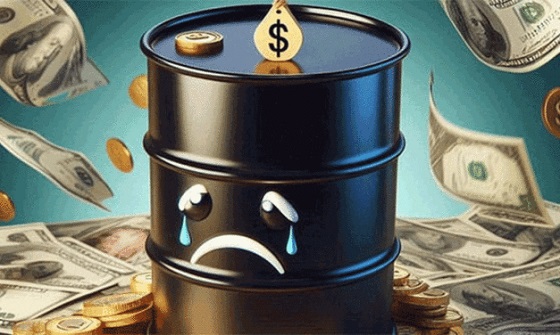President Biden’s halt on new U.S. LNG projects offers Canada a chance to showcase its commitment to producing exceptionally clean LNG, highlighting innovative approaches to environmental sustainability and economic growth in the industry.
President Joe Biden’s freeze on approvals of new U.S. LNG-for-export projects has generated new hope for expansion of Canada’s LNG capacity and exports to follow.
From 2015 to 2022, the U.S. experienced an astronomical rise in LNG exports, soaring by an unprecedented 14,000%. Not a single Canadian LNG export project crossed the finish line to completion during this period, a stagnation that speaks volumes about the challenges faced by the industry north of the border. The explosive American growth showcased the country’s aggressive expansion into global energy markets, capitalizing on its abundant shale gas reserves and streamlined regulatory processes.
The Canadian sector’s slower progress, stymied by stringent environmental regulations and the complexities of developing export infrastructure in landlocked regions, starkly diverged from the American approach, which for years proceeded with minimal environmental considerations. If the U.S. LNG industry feels like it has handed lemons with Biden’s new climate test, for Canada it’s a chance to make lemonade.
Thanks to its careful approach, the Canadian LNG sector can now rightly show it is going to be exporting the cleanest LNG in the world when it finally does get the first shipment to market very soon.
Look at some numbers:
- LNG Canada is projected to operate with an emissions intensity of 0.15 percent of carbon dioxide emissions per tonne of LNG produced, less than half the global industry average of 0.35 per cent per tonne.
- The Cedar LNG project proposed by the Haisla Nation will have an emissions intensity of just 0.08 percent of CO2 per tonne of LNG. That’s less than a third of the global average.
- And Woodfibre LNG will have an emissions intensity of just 0.04 percent of CO2 per tonne of LNG produced — and that’s less than one sixth of the global industry average.
Woodfibre LNG will also be a net-zero facility by 2027 – 23 years ahead of government net-zero regulation. Woodfibre will also be net zero during construction – a unique commitment for construction projects in Canada.
Ksi Lisims LNG, proposed by the Nisga’a Nation in B.C., promises to be operating with net-zero emissions within three years of the project’s first shipment. And Cedar LNG’s plans call for emissions to be near zero by 2030.
Woodfibre LNG points out: “We are the first e-drive LNG facility in Canada. This means our liquefaction process will be powered by renewable hydroelectricity, which is 14 times less emitting than a conventional liquefaction process powered by gas.”
Cedar LNG and Ksi Lisims LNG also plan to be all-electric, but that means B.C. Hydro will have to step up to provide the power and to transmit it to the two floating LNG production plants.
LNG Canada’s Phase One plant (which expects to go into production in 2025, but perhaps even late this year) will have to generate a portion of its cooling power by burning LNG. It would be happy to use 100% electricity, but there simply isn’t enough available. LNG Canada would certainly hope for all-electric drives for a Phase Two expansion, which is under consideration.
(Although the Site C dam will add to B.C. Hydro’s power supply in 2025, the province will still be short of electricity by 2030. So B.C. Hydro will soon put out a call for more “clean or renewable energy” from new resources. Hydro will also have to build new transmission lines or upgrade current ones, to get the power to where it is needed; and that includes LNG plants and mines.)
One reason why our emissions will be lower is our cooler climate. That means we use less energy in the process to chill natural gas to the required -161.5°C than do LNG plants on the warmer U.S. Gulf Coast or Mexican coast.
Canadian LNG companies and their natural-gas suppliers have also been working steadily to reduce emissions from wells, pipelines, and processing facilities.
Meanwhile, various studies have found that using LNG from B.C. to replace coal at Asian power-generating stations would reduce their greenhouse gas emissions by anywhere from 35 per cent to 55 percent.
And on top of all this, B.C. LNG has another advantage over U.S. LNG: The shipping distance from B.C. to prime Asian buyers is about 10 days compared to 20 days for shipments from U.S. Gulf Coast LNG plants. That can mean a reduction of 50-60% in emissions from the ships carrying the LNG.
“The distance between Canada and the key market is a huge advantage, where we are the same distance to Asia as Australia,” says Racim Gribaa of Global LNG Consulting Inc.
There is, too, another key reason why Canadian governments should look favourably on LNG exports: the benefits to Indigenous peoples who partner in, are involved in, or work for the projects.
As CEO Karen Ogen of the First Nations LNG Alliance puts it: “It’ll help boost our Canadian economy, it’ll help B.C.’s economy, and most specifically it will help the Indigenous people and our economy.
“If we’re the most disadvantaged population living in poverty, then this should help our people get out of poverty.”
And so, she adds: “Everyone wins if Canada can get into the game.”
Meanwhile, the forced pause south of the border might offer a moment of reflection for the industry, potentially providing Canada with an opportunity to reassess its own approach and perhaps find a middle ground that promotes both environmental sustainability and the economic viability of LNG exports.
- About LNG Canada: https://ow.ly/LtIF50QxFV3
- About Woodfibre LNG: https://ow.ly/uQaq50QxFV6
- About Cedar LNG: https://ow.ly/eEHR50QxFV4
- About Ksi Lisims LNG: https://ow.ly/KgAk50QxFV5















